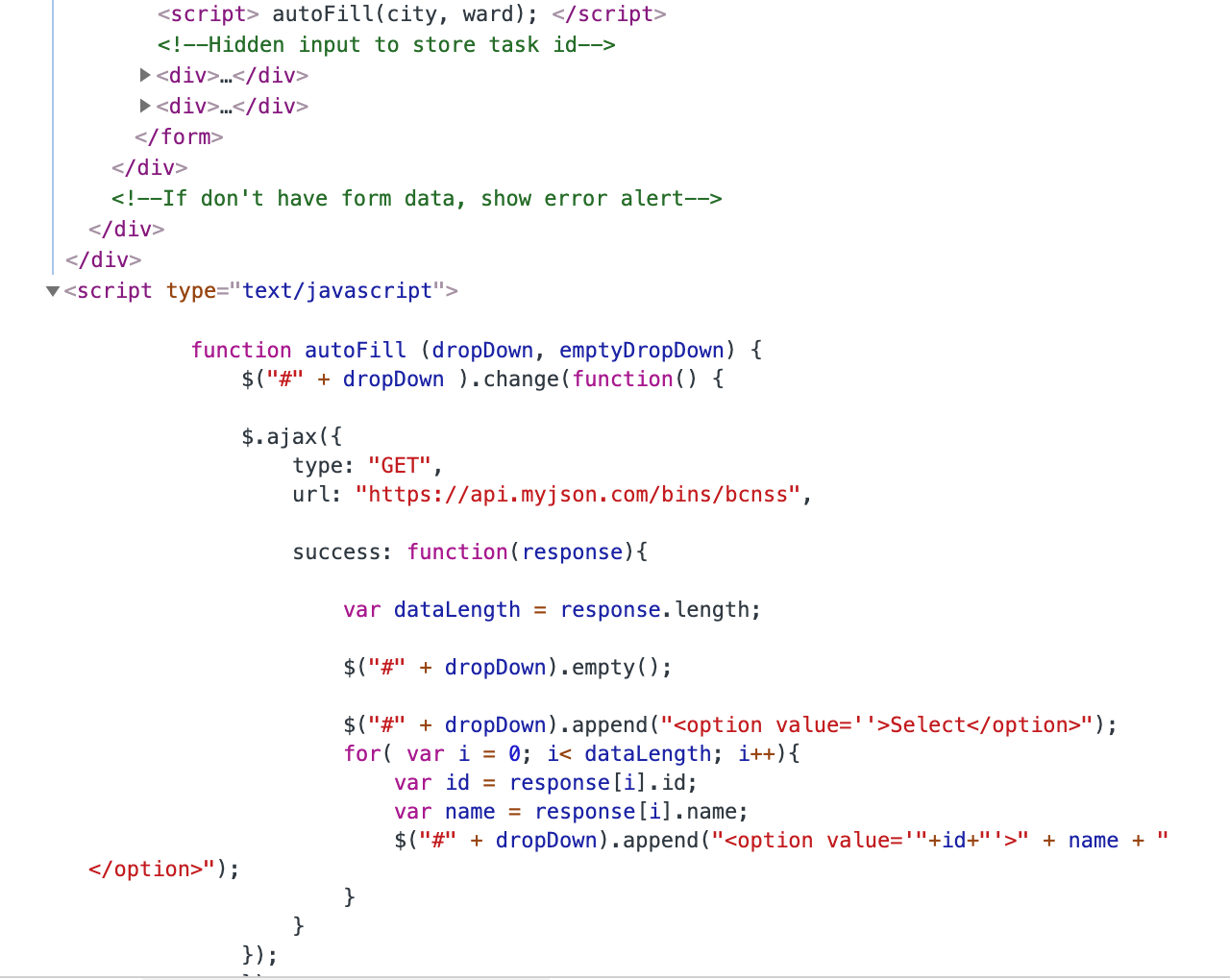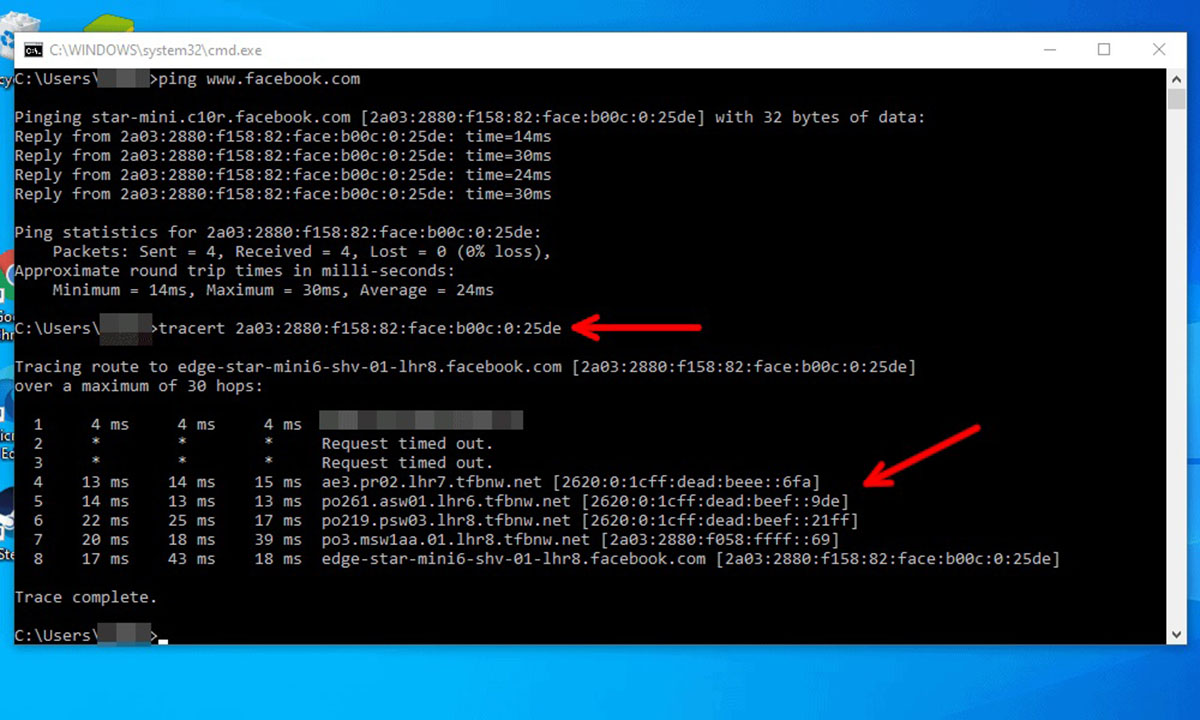Introduction
Dynamic email is a powerful tool that revolutionizes the way we interact with email. It goes beyond the traditional static emails and allows for personalized, interactive, and up-to-date content to be delivered directly to the recipient’s inbox. With dynamic email, businesses can create more engaging and interactive email experiences that drive higher customer engagement and conversions.
Dynamic email is changing the landscape of email marketing by bringing dynamic and real-time content to the forefront. Instead of sending static emails that display the same content to every recipient, dynamic emails allow for customizable and personalized content to be presented based on the recipient’s behavior, preferences, and other relevant data. This means that each recipient can receive a tailored email experience, increasing the chances of capturing their attention and driving the desired action.
One of the key benefits of dynamic email is its ability to deliver up-to-date and interactive content directly within the email. This eliminates the need for the recipient to click through to a landing page or website to view the content, making the whole experience more seamless and convenient. Dynamic email allows for real-time content updates, such as live pricing, inventory availability, or social media feeds, to be displayed within the email itself, providing instant and relevant information to the recipient.
Additionally, dynamic email helps to overcome one of the main challenges of email marketing – email fatigue. With traditional emails, recipients often receive a flood of generic and repetitive messages, leading to disengagement and ultimately unsubscribing. Dynamic email provides a refreshing and personalized approach that keeps recipients engaged by delivering relevant content that aligns with their interests and preferences. By using dynamic email, businesses can improve their email engagement metrics, such as open rates, click-through rates, and conversions.
Overall, dynamic email opens up new possibilities for businesses to connect with their audience in a more meaningful and engaging way. It allows for highly personalized and interactive email experiences that have the potential to drive higher engagement and conversions. In the following sections, we will explore the definition, benefits, use cases, design tips, and best practices for implementing dynamic email, as well as some popular tools and platforms for creating dynamic email campaigns.
Definition of Dynamic Email
Dynamic email, also known as AMP (Accelerated Mobile Pages) for Email, is an advanced email technology that allows for the creation of interactive and personalized email experiences. Unlike traditional static emails, dynamic email enables real-time content updates, interactivity, and customization within the email itself.
With dynamic email, marketers can deliver emails that adapt to the recipient’s preferences and behavior, providing a more engaging and relevant experience. Instead of sending a one-size-fits-all email, dynamic email allows for the dynamic rendering of content based on data such as the recipient’s location, device, past interactions, and other user-specific data.
One of the key features of dynamic email is the ability to embed interactive components directly within the email. This means that recipients can take action, such as submitting forms, responding to surveys, adding items to a cart, or watching videos, without leaving the email interface. Dynamic email empowers businesses to create interactive experiences that drive user engagement and encourage immediate action.
Another important aspect of dynamic email is its support for real-time content updates. This means that businesses can display live and up-to-date information within the email, such as real-time pricing, inventory availability, or social media feeds. By incorporating real-time updates, dynamic email ensures that recipients always receive the most relevant and accurate information.
Dynamic email relies on the AMP framework, which is an open-source technology developed by Google. This framework allows developers to create lightweight and fast-loading web pages that can be embedded within the email. The AMP framework ensures that dynamic emails are optimized for mobile devices and provide a seamless user experience.
Dynamic email is supported by popular email clients and providers, such as Gmail, Outlook.com, and Yahoo Mail. However, it’s important to note that not all email clients support dynamic email functionality. Therefore, it’s crucial for marketers to design fallback options for clients that do not support dynamic email, ensuring that the email still renders correctly and provides a consistent experience for all recipients.
Overall, dynamic email brings a new level of interactivity, personalization, and real-time updates to the world of email marketing. It allows businesses to create engaging and relevant email experiences that drive higher user engagement, conversions, and ultimately, business success.
Benefits of Dynamic Email
Dynamic email offers a wide range of benefits for businesses looking to enhance their email marketing strategies. Whether you’re a small business or a large enterprise, incorporating dynamic email into your campaigns can have a significant impact on your engagement rates, conversions, and overall customer experience. Here are some key benefits of using dynamic email:
- Personalization: Dynamic email allows for personalized content to be delivered to each recipient based on their preferences, behavior, and other relevant data. This level of personalization helps to create a more tailored and relevant email experience, increasing the chances of capturing the recipient’s attention and driving the desired action.
- Interactivity: One of the most significant advantages of dynamic email is its ability to include interactive elements within the email itself. This means that recipients can take action, submit forms, respond to surveys, browse products, and more, directly within the email interface. The interactivity of dynamic email helps to increase engagement, encourage immediate actions, and drive higher conversion rates.
- Real-time Updates: With dynamic email, businesses can display real-time information within the email, such as live pricing, inventory availability, or social media feeds. This ensures that recipients always receive the most up-to-date and accurate information, creating a sense of urgency and relevance. Real-time updates help businesses stay connected with their audience and provide timely information, leading to improved customer satisfaction and conversions.
- Engagement and Conversion Rates: By delivering more personalized and interactive email experiences, dynamic email has the potential to significantly increase engagement and conversion rates. When recipients receive emails that are tailored to their interests, they are more likely to engage with the content, click through to the website, and make a purchase. The interactive elements and real-time updates further enhance the engagement and conversion rates, creating a positive impact on the overall success of the email marketing campaign.
- Improved Customer Experience: Dynamic email creates a more seamless and convenient experience for recipients. Instead of navigating to external landing pages or websites, recipients can interact with the content directly within the email interface. This reduces friction, simplifies the user experience, and enhances customer satisfaction. By providing a positive and user-friendly experience, businesses can strengthen their relationships with customers and foster loyalty.
Overall, dynamic email offers numerous benefits that can elevate your email marketing efforts. The ability to personalize content, include interactive elements, provide real-time updates, and improve the customer experience can lead to higher engagement rates, increased conversions, and stronger connections with your audience.
How Dynamic Email Works
Dynamic email is powered by the AMP (Accelerated Mobile Pages) framework, which allows for the creation of interactive and real-time content within email messages. Here’s a simplified breakdown of how dynamic email works:
- Creation of Dynamic Email: Marketers and developers use HTML and CSS, along with AMP syntax and components, to create dynamic email templates. These templates can include personalized content, interactive elements, and real-time data.
- Sending the Dynamic Email: The dynamic email is sent to recipients’ email addresses, just like a regular email. The email clients that support dynamic email will recognize the AMP components and render the email accordingly.
- Rendering the Dynamic Email: When a recipient opens a dynamic email in an AMP-supported email client, the email client renders the email using the AMP framework. This allows for the dynamic rendering of personalized and interactive content.
- Fetching Real-time Data: If the dynamic email includes real-time data, such as live pricing or social media feeds, the email client fetches the latest data from the respective sources at the time of opening or interacting with the email. This ensures that recipients always see the most up-to-date information.
- Interacting with the Dynamic Email: Recipients can interact with the dynamic email directly within the email interface. They can click on buttons, submit forms, respond to surveys, browse products, and perform other actions without leaving the email, thanks to the interactive components enabled by the AMP framework.
- Tracking and Analytics: Marketers can track the engagement and performance of their dynamic email campaigns using analytics tools. They can measure metrics such as opens, clicks, conversions, and other relevant data points to gain insights into the effectiveness of the dynamic email campaigns.
It’s important to note that dynamic email functionality is supported by select email clients and providers, and not all recipients may have access to this feature. In cases where recipients open dynamic email in unsupported email clients, fallback options are designed to ensure that the email still renders correctly and provides a consistent experience.
Overall, the AMP framework enables the creation and rendering of dynamic email with personalized content, interactive elements, and real-time updates. Recipients can engage with the email directly, and marketers can track the performance of their campaigns, making dynamic email a powerful tool for driving higher engagement, conversions, and delivering a more engaging email experience.
Use Cases of Dynamic Email
Dynamic email offers endless possibilities for businesses across various industries. Here are some key use cases of dynamic email:
- Ecommerce: Dynamic email is particularly valuable in the ecommerce industry. Retailers can send personalized product recommendations based on the recipient’s browsing history or previous purchases. They can showcase real-time pricing and inventory availability, allowing customers to make informed purchasing decisions directly within the email. Ecommerce businesses can also leverage dynamic email to send abandoned cart reminders, order updates, and promotions tailored to individual customer preferences.
- Travel and Hospitality: In the travel and hospitality sector, dynamic email can be used to send personalized travel itineraries, flight updates, and hotel reservation confirmations. Travel agencies and hotel chains can also utilize dynamic email to display real-time pricing for flights, accommodations, and car rentals. Dynamic email can enhance the overall experience by providing real-time updates and enabling customers to modify their travel plans or book additional services directly within the email.
- Content Publishers: Dynamic email can transform the way content publishers engage with their audience. Publishers can send personalized newsletters with recommended articles based on the reader’s interests, preferences, and past reading history. They can also embed interactive elements, such as polls or quizzes, within the email to encourage reader participation. Dynamic email allows publishers to deliver real-time updates on breaking news or trending topics, making the email experience more relevant and engaging.
- Financial Services: Banks, credit card companies, and other financial institutions can utilize dynamic email to enhance their communication with customers. Dynamic email can be used to send personalized account statements, transaction alerts, and bill payment reminders. Financial institutions can also leverage dynamic email to display real-time stock market updates, interest rates, or loan repayment options. By providing real-time and personalized financial information directly within the email, dynamic email improves customer engagement and satisfaction.
- Event Management: Dynamic email can significantly enhance event management and ticketing processes. Event organizers can send personalized event invitations, including real-time availability updates and ticket purchasing options directly within the email. Dynamic email can also be used to send event reminders, schedule changes, and personalized recommendations based on the attendee’s interests or previous event attendance. By incorporating interactive elements, such as RSVP buttons or session voting, dynamic email facilitates seamless event management.
These are just a few examples of the many use cases for dynamic email across industries. Whether it’s enhancing customer experiences, driving conversions, or improving communication, dynamic email proves to be a valuable tool for businesses looking to elevate their email marketing strategies.
Tips for Designing Dynamic Email
Designing dynamic email requires careful planning and consideration to ensure a seamless and engaging user experience. Here are some essential tips to keep in mind when designing dynamic email:
- Keep it Mobile-friendly: The majority of email opens occur on mobile devices, so it’s crucial to design your dynamic email with mobile users in mind. Optimize your email for mobile responsiveness, ensuring it displays properly and functions well on various mobile devices and screen sizes.
- Use Clear and Compelling CTAs: The call-to-action (CTA) in your dynamic email is crucial for driving engagement and conversions. Make sure your CTAs are clear, visually prominent, and compelling. Use action-oriented language and ensure the button or link stands out in the email design.
- Personalize Your Content: Take advantage of dynamic content capabilities to personalize your email for each recipient. Incorporate personalized product recommendations, location-specific information, or customer-specific data to make your email more relevant and engaging.
- Focus on Visual Appeal: Use eye-catching visuals, such as high-quality images, icons, and illustrations, to capture attention and enhance the overall aesthetic of your dynamic email. Balance the use of visuals with text to create a visually appealing and well-balanced design.
- Minimize Load Time: Optimize your dynamic email to ensure quick loading times. Compress images, optimize HTML and CSS code, and avoid using heavy media files that could slow down the email loading speed. A fast-loading email enhances user experience and helps to avoid abandonment.
- Test and Preview: Before sending your dynamic email campaign, thoroughly test and preview it across different email clients and devices. This ensures that your email renders correctly and functions as intended in various environments. Pay attention to how your email adapts to different email clients that may not support dynamic content.
- Consider Accessibility: Design your dynamic email with accessibility in mind to ensure that all recipients can fully engage with the content. Use accessible color schemes, alt text for images, and proper heading structure to accommodate users with disabilities.
- Include Relevant and Real-time Information: Leverage the power of dynamic content to include real-time information, such as live pricing, countdown timers, or social media feeds. This keeps your email fresh, relevant, and provides up-to-date information to recipients.
- Encourage Social Sharing: Include social media sharing icons or buttons to make it easy for recipients to share your dynamic email on their social networks. This can help extend the reach of your email campaign and generate additional exposure.
- Monitor Analytics and Metrics: Track the performance of your dynamic email campaigns by monitoring key metrics and analytics. Measure open rates, click-through rates, conversions, and other relevant data to gain insights into audience engagement and make data-driven decisions for future campaigns.
By following these tips, you can create visually appealing, engaging, and effective dynamic email campaigns that captivate your audience and drive desired actions.
Best Practices for Implementing Dynamic Email
Implementing dynamic email requires careful planning and execution to ensure optimal results. Here are some best practices to consider when implementing dynamic email:
- Define Clear Goals: Before diving into dynamic email, define clear goals for your campaign. Identify what you want to achieve, whether it’s increasing sales, driving website traffic, or improving customer engagement. Having clear goals will help you align your dynamic email strategy and measure its success.
- Segment Your Audience: Use data and analytics to segment your audience into specific groups based on demographics, behavior, or preferences. This will enable you to deliver highly targeted and personalized dynamic email campaigns that resonate with each segment, leading to better engagement and conversions.
- Leverage Dynamic Content: Take advantage of dynamic content capabilities to deliver personalized and relevant content to your recipients. Customize the email content based on each recipient’s preferences, purchase history, or other data points. Dynamic content helps to create a more personalized and engaging email experience.
- Test Dynamic Elements: Test any dynamic elements in your email thoroughly to ensure they function correctly across different email clients and devices. Test dynamic features such as live pricing, real-time updates, and interactive elements to ensure a seamless experience for all recipients.
- Design Fallback Options: Not all email clients support dynamic email functionality. Design fallback options to ensure that even recipients using unsupported clients can still view a properly rendered email. This ensures a consistent experience for all recipients and helps to avoid any confusion or frustration.
- Follow Email Marketing Best Practices: While dynamic email offers unique capabilities, it’s important to follow general email marketing best practices. These include using compelling subject lines, crafting concise and engaging content, optimizing for mobile devices, and including a clear call-to-action.
- Monitor and Analyze Performance: Track the performance of your dynamic email campaigns using analytics tools. Monitor metrics such as open rates, click-through rates, conversions, and engagement levels. Analyze the data to gain insights into the effectiveness of your campaigns and make informed decisions for future optimizations.
- Stay Up-to-Date with Industry Trends: Dynamic email is an evolving technology, so it’s important to stay updated with the latest industry trends and advancements. Keep an eye on new features, guidelines, and best practices to stay ahead and make the most of dynamic email capabilities.
- Continuously Improve: Dynamic email provides an opportunity for continuous improvement. Analyze the performance of your campaigns, gather feedback from recipients, and test new strategies and elements. Use the insights to optimize your dynamic email campaigns over time and adapt to changing customer preferences.
By following these best practices, you can implement dynamic email campaigns effectively and maximize their impact on your audience engagement, conversions, and overall email marketing success.
Tools and Platforms for Creating Dynamic Email
Creating dynamic email requires the right tools and platforms to design, build, and deploy your campaigns. Here are some popular tools and platforms that can help you create dynamic email:
- Google AMP for Email: Google AMP for Email is one of the leading frameworks for creating dynamic email. It provides a set of HTML and CSS components specifically designed for building interactive and personalized email experiences. AMP for Email allows you to easily incorporate dynamic elements, real-time updates, and interactivity into your emails.
- Email Service Providers (ESPs): Many email service providers offer built-in features or integrations for creating dynamic email campaigns. These ESPs provide a user-friendly interface, pre-built templates, personalization options, and analytics to help you create and manage your dynamic email campaigns effectively. Some popular ESPs include Mailchimp, SendGrid, and Campaign Monitor.
- Marketing Automation Platforms: Marketing automation platforms like HubSpot, Marketo, and Salesforce Pardot offer advanced features for creating and personalizing dynamic email campaigns. These platforms provide robust tools for segmenting your audience, automating workflows, and delivering personalized content based on user behavior, preferences, and other data points.
- Front-end Development Frameworks: If you have a development team or resources, you can leverage front-end development frameworks like React, Angular, or Vue.js to build dynamic emails. These frameworks provide the flexibility and customization options needed to create highly interactive and personalized email experiences.
- Email Testing Platforms: To ensure your dynamic emails render correctly across different email clients and devices, you can use testing platforms like Litmus or Email on Acid. These platforms allow you to preview and test your dynamic emails in multiple environments, providing insights and recommendations for optimizing your email designs.
- Dynamic Content Management Systems (CMS): Some content management systems, like WordPress or Drupal, offer plugins or modules that enable dynamic email creation and management. These CMS solutions provide a seamless integration between your website or content database and your email campaigns, allowing for dynamic content updates and personalization.
- Custom Development: For businesses with unique email marketing requirements, custom development may be necessary. Hiring a developer or development team can help build a custom dynamic email solution tailored to your specific needs and integrations.
When selecting tools and platforms for creating dynamic email, consider factors such as ease of use, scalability, integration capabilities, customization options, and budget. It’s essential to choose tools that align with your technical capabilities and business requirements to create successful dynamic email campaigns.
Examples of Dynamic Email
Dynamic email has been widely adopted by businesses across industries to deliver personalized and interactive email experiences. Here are some examples of dynamic email campaigns:
- Retail: Ecommerce brands often use dynamic email to showcase personalized product recommendations based on the recipient’s browsing history or purchase behavior. These dynamic emails can display real-time pricing, availability, and product ratings, making it easy for customers to make informed purchase decisions directly within the email.
- Travel: Travel agencies and airlines utilize dynamic email to send personalized travel offers, flight alerts, and hotel recommendations. Dynamic email can display real-time pricing and availability for flights and accommodations, prompting customers to take immediate action and make bookings without leaving the email interface.
- News and Media: News publishers leverage dynamic email to deliver personalized newsletters tailored to the recipient’s interests. Dynamic email campaigns can include real-time news updates, recommended articles, and options to customize content preferences. Interactive elements like live polls and surveys allow readers to engage directly within the email.
- Financial Services: Banks and financial institutions utilize dynamic email to provide customers with personalized financial information. Dynamic email campaigns can include real-time balance updates, transaction alerts, and customized offers based on the recipient’s banking history. Interactive prompts within the email allow customers to complete actions, such as transferring funds or applying for loans.
- Events and Conferences: Event organizers leverage dynamic email to send personalized invitations and event updates. Dynamic email campaigns can display real-time availability for event tickets, schedule changes, and session recommendations tailored to the recipient’s interests. Interactive elements like RSVP buttons and session voting make it easy for recipients to engage directly within the email.
These examples showcase the versatility and effectiveness of dynamic email in delivering personalized and interactive experiences. By leveraging dynamic content, real-time updates, and interactive elements, businesses can capture the attention of their audience, promote engagement, and drive conversions.
Conclusion
Dynamic email has transformed the way businesses engage with their audience through personalized, interactive, and real-time content. By utilizing the power of the AMP framework and other tools and platforms, businesses can deliver highly engaging email experiences that drive higher engagement rates, conversions, and overall customer satisfaction.
The benefits of dynamic email are numerous. It allows for personalized content that speaks directly to the recipient’s interests and preferences. The interactive elements embedded within dynamic emails enable recipients to take immediate action, such as making a purchase or submitting a form, without leaving the email interface. Additionally, the ability to display real-time updates and information ensures that recipients receive the most relevant and accurate content at the moment they open the email.
When designing dynamic email campaigns, it is important to prioritize mobile-friendliness, clear CTAs, personalized content, visual appeal, fast loading times, and accessibility. Monitoring performance metrics and continuously optimizing your campaigns based on insights will help ensure the effectiveness of your dynamic email efforts.
In conclusion, dynamic email opens up new opportunities for businesses to connect with their audience in a more meaningful and engaging way. By providing personalized, interactive, and real-time email experiences, businesses can not only improve customer engagement but also drive conversions and build stronger relationships with their customers. With the right tools, best practices, and a touch of creativity, dynamic email can unlock a wealth of possibilities for businesses seeking to make a lasting impact in the world of email marketing.

























